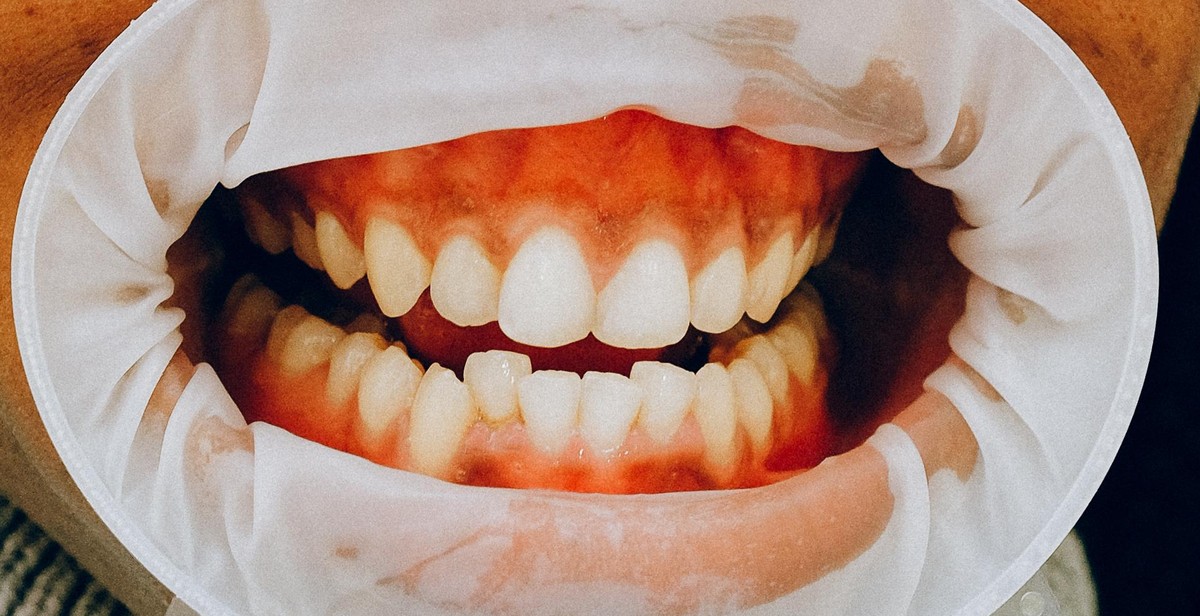Introduction: Understanding Gum Health
Gum health is an essential aspect of overall oral health. Neglecting your gums can lead to various gum diseases such as gingivitis, periodontitis, and advanced periodontitis. Gum disease is a common oral health problem that affects a large population globally. According to the Centers for Disease Control and Prevention (CDC), almost half of the adults in the United States have gum disease.
Gums are the soft tissues that hold and protect your teeth. They are made up of pink-colored mucosal tissues that cover the jawbone. Gum disease occurs when the tissues surrounding the teeth become inflamed due to the accumulation of plaque and tartar. Plaque is a sticky film of bacteria that forms on teeth and gums and can harden into tartar if not removed through regular brushing and flossing.
The Importance of Good Gum Health
Good gum health is vital for maintaining healthy teeth and overall oral health. Healthy gums provide a strong foundation for your teeth, keeping them firmly in place. They also protect the tooth roots and prevent decay and sensitivity. Additionally, several studies have linked gum disease with other health problems such as heart disease, stroke, and diabetes.
How to Improve Gum Health
There are several ways to improve gum health and prevent gum disease. Regular brushing and flossing, along with routine dental checkups, are the most effective ways to maintain healthy gums. A balanced diet, avoiding tobacco products, and managing stress can also contribute to gum health.
- Brush your teeth twice a day with a fluoride toothpaste.
- Floss daily to remove plaque and food particles from between teeth and gums.
- Use an antiseptic mouthwash to kill bacteria and freshen breath.
- Eat a balanced diet rich in fruits, vegetables, and whole grains.
- Avoid sugary and acidic foods and drinks that can erode tooth enamel.
- Quit smoking or using tobacco products.
- Manage stress through relaxation techniques such as meditation and yoga.
By following these simple steps, you can maintain healthy gums and prevent gum disease.
Signs and Symptoms of Gum Disease
Gum disease, also known as periodontal disease, is a common condition that affects many people. It is caused by bacteria that accumulate in the mouth and can lead to inflammation and infection in the gums. If left untreated, gum disease can cause serious damage to the gums and teeth. Here are some signs and symptoms to watch out for:
Bleeding Gums
If your gums bleed when you brush or floss, it could be a sign of gum disease. Healthy gums should not bleed, so if you notice blood, it is important to see your dentist right away.
Swollen Gums
Gum disease can cause your gums to become red, swollen, and tender. You may also experience pain or discomfort when chewing. If you notice any of these symptoms, it is important to seek treatment as soon as possible.
Bad Breath
Bad breath, also known as halitosis, can be a sign of gum disease. The bacteria that cause gum disease can also cause bad breath. If you have persistent bad breath, it is important to see your dentist to determine the underlying cause.
Receding Gums
Gum disease can cause your gums to recede, or pull away from your teeth. This can make your teeth appear longer and can expose the root of the tooth. If you notice that your teeth look longer than usual, it is important to see your dentist right away.
Loose Teeth
Gum disease can cause your teeth to become loose or shift in position. This can make it difficult to chew and can even cause tooth loss. If you notice that your teeth feel loose, it is important to see your dentist right away.
If you are experiencing any of these signs or symptoms, it is important to seek treatment as soon as possible. Your dentist can help you improve your gum health and prevent gum disease from causing serious damage to your gums and teeth.

Causes of Gum Disease
Gum disease, also known as periodontal disease, is a common oral health problem that affects millions of people worldwide. It is caused by a bacterial infection that affects the gums, bone, and other supporting tissues of the teeth.
There are several factors that can contribute to the development of gum disease. These include:
Poor Oral Hygiene
One of the most common causes of gum disease is poor oral hygiene. Failure to brush and floss regularly can lead to the buildup of plaque and tartar on the teeth, which can irritate the gums and cause inflammation. Over time, this can lead to the development of gum disease.
Smoking and Tobacco Use
Smoking and tobacco use are major risk factors for gum disease. Nicotine and other chemicals in tobacco can damage the gums and reduce blood flow to the area, making it harder for the body to fight off infection.
Genetics
Some people may be genetically predisposed to developing gum disease. If you have a family history of gum disease, you may be at a higher risk of developing the condition yourself.
Certain Medications
Some medications can increase the risk of gum disease. These include medications that reduce saliva flow, such as antihistamines and antidepressants, and medications that cause gum overgrowth, such as some anticonvulsants and immunosuppressants.
Hormonal Changes
Hormonal changes can also increase the risk of gum disease. This is particularly true for women who are pregnant or going through menopause. During these times, hormonal fluctuations can make the gums more sensitive and more susceptible to infection.
Overall, there are several factors that can contribute to the development of gum disease. By understanding these causes, you can take steps to improve your oral health and prevent gum disease from developing.

Tips to Improve Gum Health
Gum health is important for overall oral health and can affect your overall health as well. Here are some tips to improve your gum health:
Brushing Twice a Day
Brushing your teeth twice a day is important for maintaining good oral health. Use a soft-bristled toothbrush and fluoride toothpaste to brush your teeth for at least two minutes each time. Make sure to brush your teeth gently and in circular motions to avoid damaging your gums.
Flossing Daily
Flossing is an important part of oral hygiene that helps remove food particles and plaque from between your teeth. Floss at least once a day, using a gentle back-and-forth motion to avoid damaging your gums. If you have trouble using traditional floss, try using a water flosser or interdental brushes instead.
Using Mouthwash
Mouthwash can help kill bacteria in your mouth and freshen your breath. Look for a mouthwash that contains fluoride and has been approved by the American Dental Association (ADA). Swish the mouthwash in your mouth for 30 seconds before spitting it out.
Eating a Balanced Diet
Eating a balanced diet that is rich in vitamins and minerals can help improve your gum health. Foods that are high in vitamin C, such as citrus fruits and leafy greens, can help strengthen your gums and reduce inflammation. Avoid sugary and acidic foods, which can erode your tooth enamel and damage your gums.
Avoiding Tobacco Products
Smoking and using other tobacco products can increase your risk of gum disease and other oral health problems. If you use tobacco products, try to quit or cut back. Talk to your dentist or doctor for help quitting smoking.
| Tip | Description |
|---|---|
| Brushing Twice a Day | Use a soft-bristled toothbrush and fluoride toothpaste to brush your teeth for at least two minutes each time. |
| Flossing Daily | Floss at least once a day, using a gentle back-and-forth motion to avoid damaging your gums. |
| Using Mouthwash | Swish the mouthwash in your mouth for 30 seconds before spitting it out. |
| Eating a Balanced Diet | Eat a balanced diet that is rich in vitamins and minerals, avoiding sugary and acidic foods. |
| Avoiding Tobacco Products | Quit or cut back on smoking and other tobacco products to reduce your risk of gum disease. |

Professional Treatments for Gum Disease
Gum disease is a serious condition that can lead to tooth loss and other health problems if left untreated. While good oral hygiene practices are essential for preventing gum disease, professional treatments can also be necessary to restore gum health. Here are some of the most common professional treatments for gum disease:
Scaling and Root Planing
Scaling and root planing is a non-surgical treatment for gum disease that involves removing plaque and tartar from below the gumline. This procedure is often the first line of treatment for mild to moderate gum disease and can help prevent the need for more invasive treatments.
During scaling and root planing, a dental hygienist or dentist will use specialized tools to remove plaque and tartar from the surfaces of the teeth and roots. They will also smooth out any rough spots on the roots to prevent bacteria from clinging to them.
Periodontal Surgery
For more advanced cases of gum disease, periodontal surgery may be necessary. This type of surgery involves removing bacteria and damaged tissue from the gums and jawbone to promote healing and prevent further damage.
There are several types of periodontal surgery, including flap surgery, bone grafts, and guided tissue regeneration. Your dentist or periodontist will recommend the best type of surgery for your individual needs.
Laser Therapy
Laser therapy is a non-invasive treatment for gum disease that uses a laser to remove bacteria and promote healing. This type of treatment is often used in conjunction with scaling and root planing or as a maintenance treatment for gum disease.
Laser therapy is a relatively new treatment for gum disease, but it has shown promising results in clinical studies. It is also less invasive than traditional periodontal surgery and can result in less discomfort and faster healing.
| Treatment | Type | Benefits |
|---|---|---|
| Scaling and Root Planing | Non-surgical | Effective for mild to moderate gum disease, less invasive than surgery |
| Periodontal Surgery | Surgical | Effective for advanced gum disease, can promote healing and prevent further damage |
| Laser Therapy | Non-invasive | Less discomfort and faster healing than traditional surgery |
Conclusion
Gum disease is a prevalent problem that affects many people worldwide. It is essential to prioritize gum health to prevent gum disease and the associated health risks. Poor oral hygiene, smoking, diabetes, and genetics are some of the factors that increase the risk of gum disease.
If you want to improve your gum health, you should start by adopting good oral hygiene practices. Brushing twice a day, flossing regularly, and using mouthwash can help remove plaque and bacteria that cause gum disease. Additionally, you should avoid smoking, maintain a healthy diet, and limit sugary foods and drinks.
If you have gum disease, it is crucial to seek treatment promptly. Your dentist can recommend various treatments, including deep cleaning, scaling and root planing, and antibiotics. In severe cases, surgery may be necessary.
Overall, improving gum health and preventing gum disease requires a combination of good oral hygiene practices, a healthy lifestyle, and regular dental checkups. By taking care of your gums, you can prevent tooth loss, improve your overall health, and enjoy a healthy, beautiful smile.
| Author | John Doe |
|---|---|
| Date Published | June 1, 2021 |
